SIM Fried Maho with Cloud Storage 100 GB available for purchase of 20,000 yen "Nextbit Robin" Review

Cloud funding siteProductized from KickstarterNextbit's "RobinIs an Android smartphone with 100 GB of cloud storage on all terminals. In addition to "smart storage" that automatically discriminates not only pictures but also unused apps and stores it in the cloud, it boasts high end class specs at the time of 2016 as well as low price. I tried using "cloud-first" smartphones that they will not suffer from capacity shortage of built-in storage actually for one month.
Robin. The smarter smartphone. - Nextbit
https://www.nextbit.com/
◆ Photo review
Robin is in a vertically long package. Color was developed in two colors, this time I got "Mint".
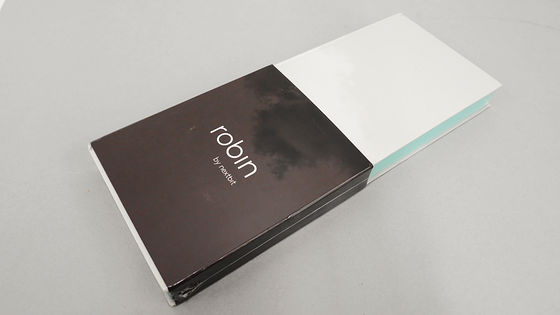
When unpacking, the back side of the lid is a manual, and the body and the USB Type-C cable for charging are contained on the right side.
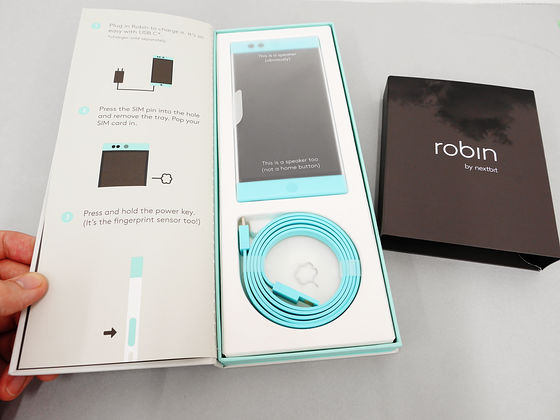
Contents are simple, only main body · USB cable · SIM card exchange pin. The main body is wrapped in a vinyl sheet and on the lower side "This is a speaker (not a home button)" with a playful note.
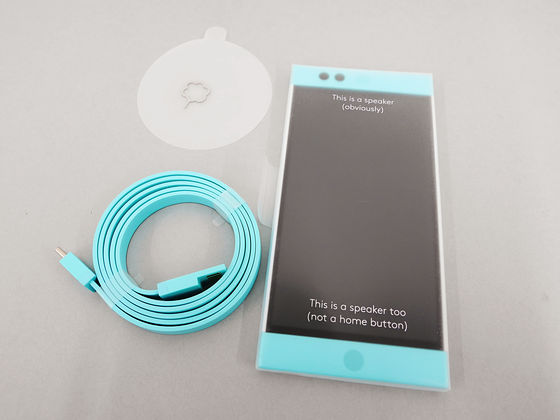
So, having Robin in your hand is like this. The left and right bezels are extremely fine, the display is as large as 5.2 inches (1920 × 1080).

There are a front camera and a speaker at the top of the screen, and there is a speaker at the position of the home button at the lower iPhone, so you can enjoy movies and music with stereo sound.
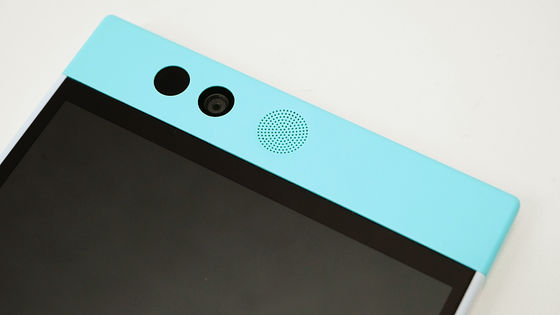
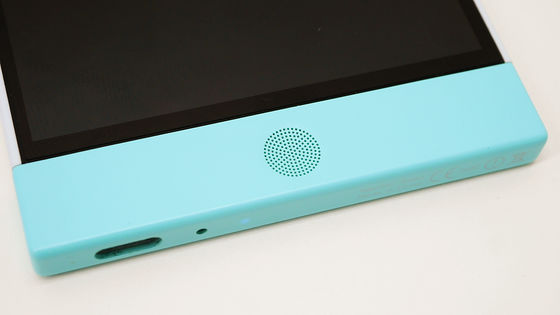
Cloud icon on the reverse side. It has become a pop design like a whole made with Lego block.

The rear camera and the flash are lined up at the top of the back. The rear camera has 13 million pixels and has enough specs that you can shoot 4K quality movies.
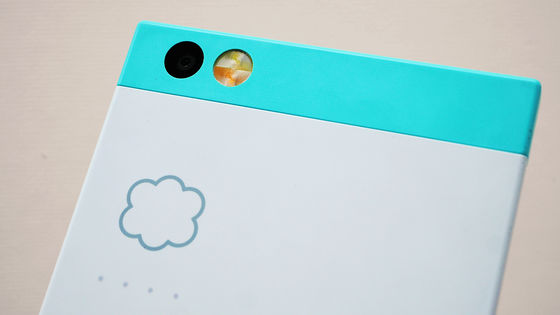
Volume button on the left side.
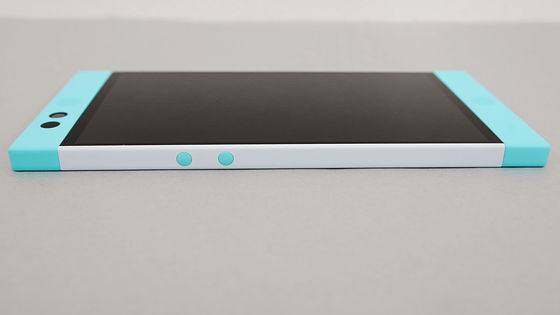
A nano SIM card tray and a power button with a fingerprint authentication sensor on the right side.

Earphone jack and microphone on the top.
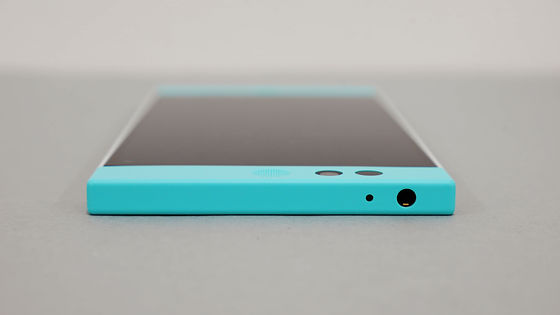
There is a USB Type-C port and a microphone on the bottom.
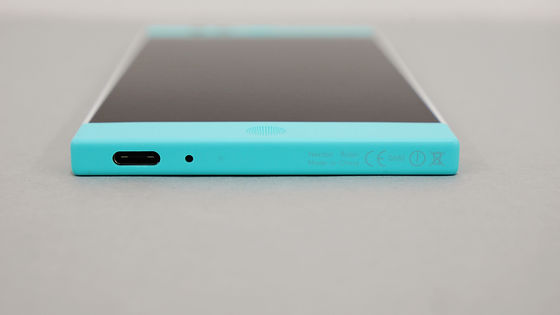
One of the accessories' USB cable is USB - A, and the other is USB Type - C. Although it is a flat cable, it is perfect for people who like 'Robin's design' because the color is in accordance with the terminal. Since charging adapter is not attached, you need to prepare it yourself, but since Robin is compatible with the quick charging standard "Quick Charge 2.0", you can quickly charge using Quick Charge 2.0 compatible adapter .
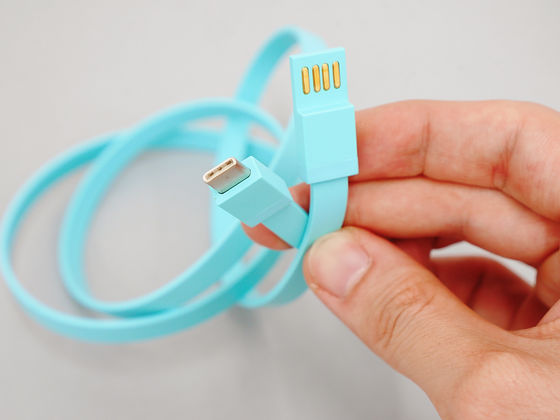
The specification of Robin is as follows.
| size | 149 × 72.02 × 7 mm |
|---|---|
| weight | 145 g |
| display | 5.2 inches (1920 x 1080), liquid crystal, Gorilla Glass 4 |
| SoC | Snapdragon 808 (6 cores) |
| memory | 3 GB |
| Internal storage | 32 GB |
| Cloud storage | 100 GB |
| SD card | Not supported (no slot) |
| camera | Front camera: 5 million pixels |
| Rear camera: 13 million pixels | |
| battery | 2680 mAh |
| speaker | Dual speaker |
| charging | Type-C (compatible with Quick Charge 2.0) |
| Sensors | Fingerprint authentication, NFC |
| Connection | Wi-Fi 802.11a / b / g / n / ac |
| Bluetooth 4.0 LE | |
| Corresponding band (frequency band) | GSM 850/900/1800/1900 |
| HSPA 850/900/1700/1800/1900/2100 | |
| LTE Bands 1/2/3/4/5/7/8/12/17/20/28 |
◆ Setup
That's why I turn on the power and set it up.
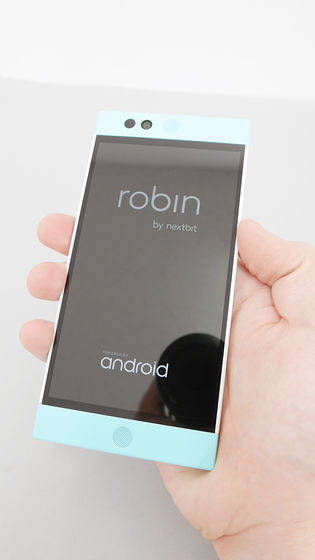
Since Robin is Japanese-ready, you can follow Wi-Fi, Google Account settings, fingerprint registration according to instructions.

After initial setting, insert SIM card. It does not correspond to the SIM card of the au line, so be careful.
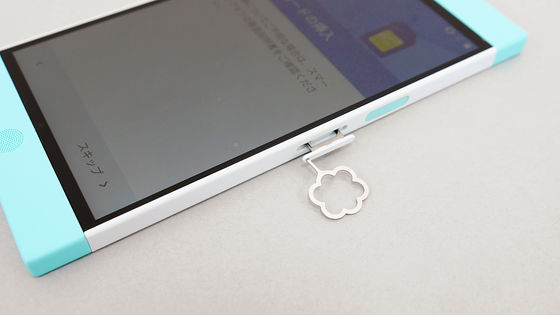
◆ 100 GB of cloud storage
The biggest feature of Nextbit Robin is that 100 GB of cloud storage can be used for each one. Although other smartphones can store photos and videos in the cloud service, Robin's cloud storage is embedded in the OS itself, so that you can archive installed applications themselves. Since AI automatically distinguishes applications that they have not used for a while and uploads them to the cloud, it is possible to use up to 128 GB of capacity in combination with the built-in storage.
Nextbit Robin's main screen looks something like this. There is no waste application other than the Google application and the preinstalled application of Robin, it is very simple. In many Android launchers, there is an application list screen besides the home screen, but Robin will display on the home screen all installed applications like iPhone. Originally iPhone users feel uncomfortable, but if they are Android users they may be perplexed by how to use it. Since it is possible to divide folders by overlapping applications and applications, it is possible to use the home screen cleanly and cleanly if you get used to it.


To check the capacity of cloud storage, tap "Smart Storage" in the setting application. Smart storage is a generic name for two storage systems, local and cloud.

The usage of local storage and cloud storage is displayed. Tap on the icon in the upper right to set what to back up to cloud storage and at what timing.

Tap "Options"

"Backup setting" is displayed. "When you upload data to the cloud at which timing" can be changed by "Wi-Fi only" or "Charging only". You can select "Back up application" or "Back up media" to "what data will be uploaded to the cloud". If you check all of them, it means "Back up all data to the cloud when charging while Wi-Fi connection". It seems to be OK to turn off only "Charging only", but turning off "Wi-Fi only" will use the capacity of the mobile network for backup, so check if it is not turned off. If you turn on "Back up media", only "photos" are backed up, so upload the movie to another cloud storage service etc. OK.

At the time of this backup, applications that are not using for a while will be archived to the cloud as a whole. Applications stored in the cloud will soon see the icon grayed out.

If you say "I kept it in the cloud but want to use it again", restoring from cloud storage will start when you tap the gray app.

You can see how long it will take if you look at the notification menu. Depending on the time of day, most are completed in tens of seconds.

When restoring, icons are colored and available.

When restoring the application, the LED indicator under the cloud icon on the back is lit.
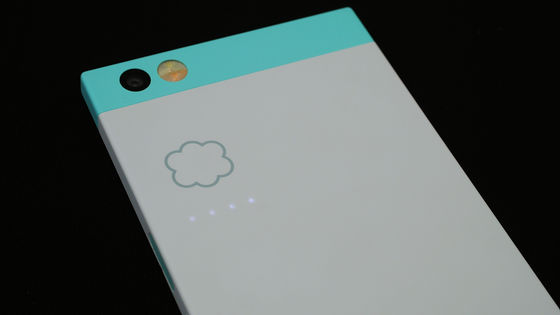
However, in the evening to the evening time, if you restored a large app, Wi-Fi could take more than 10 minutes per one. The judgment of "application not using" may be fairly severe, and in the night the app just used in the evening entered the cloud as "unused app".
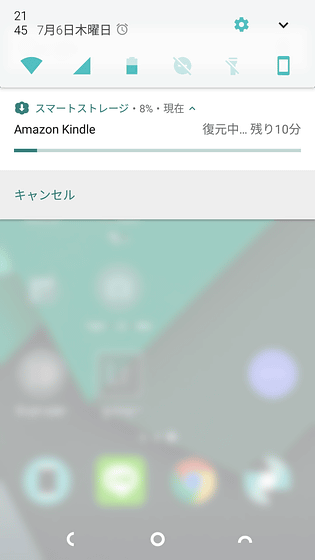
To prevent "frequently used applications" from being archived in the cloud, just tap the application icon and swipe down. Applications are pinned and will not be archived to the cloud even if they are not used at all. Pinning will be canceled when lowering the application again.

It is also possible to pin away from the "APPS (application list)" of smart storage in one stroke.
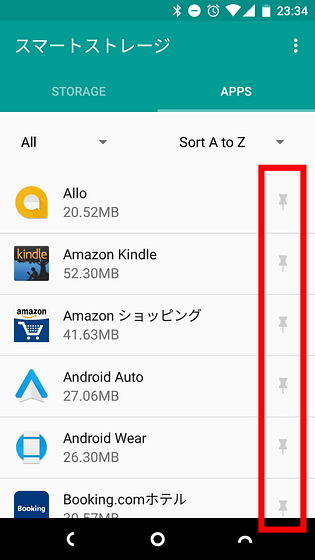
In addition, "Archive the application to the cloud" is not started unless the internal storage is near full, so once you shoot movies and so on up to the full capacity it will force to start the archive function of the application It is possible.
◆ Widget and screen division function
With Robin's standard launcher, you can not set the widget of the application on the home screen, but "widget layer" is prepared on the back side of the home screen. To install the widget Pinch in with two fingers on the home screen.
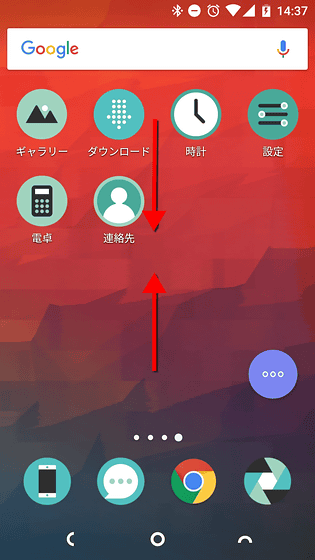
Then the widget layer will be displayed, press and hold the appropriate place.
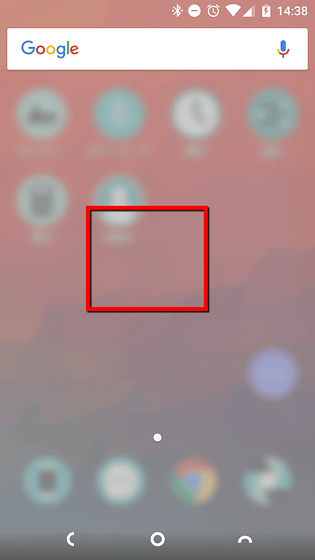
Since the widget list of the application you are installing is displayed, long press the widget you want to install.
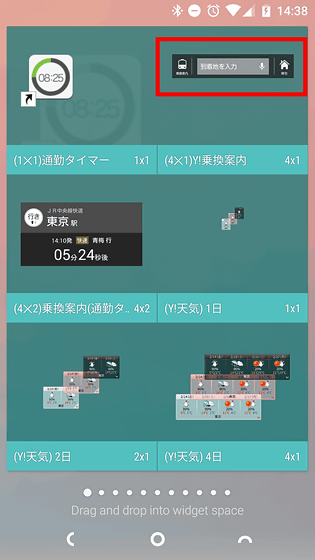
If you set widgets in any place you like OK.
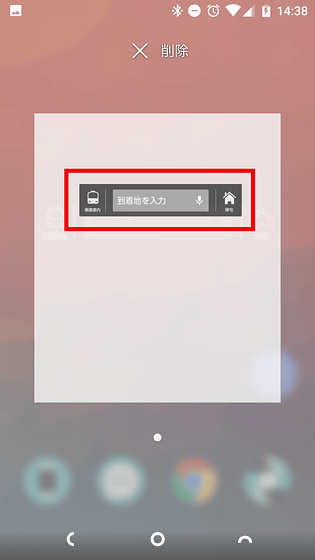
You can pin up the home screen from next time, you can open the screen of the widget.
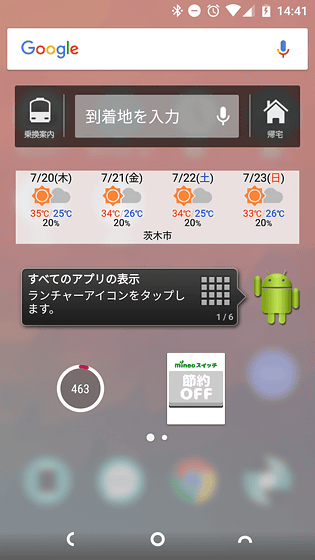
In addition, Robin's launcher supports screen splitting function. First, tap the menu button to display a list of open applications.
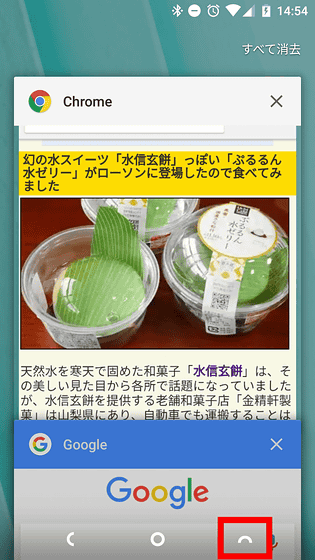
If you hold down the application you want to split and display from among them, an area to drag up appears at the top, so drag the tab as it is.
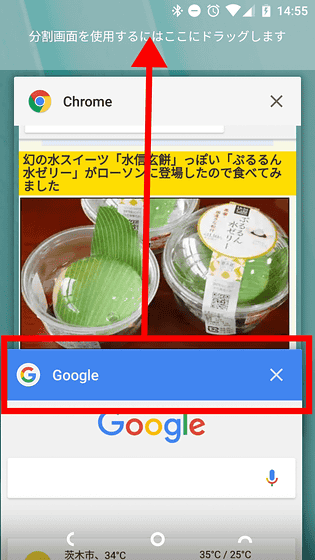
Then, two applications are now displayed in two separate upper and lower parts. It is a useful function when taking notes or googling while watching the browser.
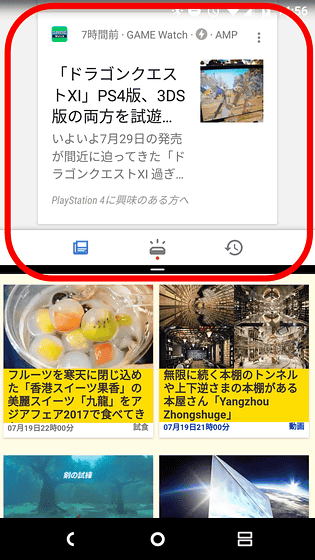
If you hold it horizontally, you will see it divided into right and left parts. If it is combined with a Bluetooth keyboard, it may be used instead of a PC for a bit of work.
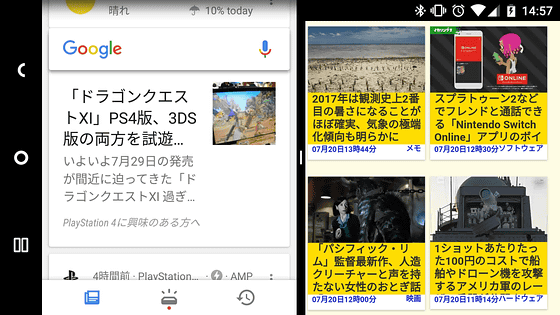
By the way, although it is a Robin launcher that is quite different from the common Android launcher,Google Now LauncherIt is also a hand to install such as. In the Google Now launcher, applications archived in the cloud disappear from the home screen, but they can be confirmed on the application list screen. Although you can not use the "Pull down icon and pin down" function, you can restore from the cloud by tapping the icon, so the basic function is maintained.
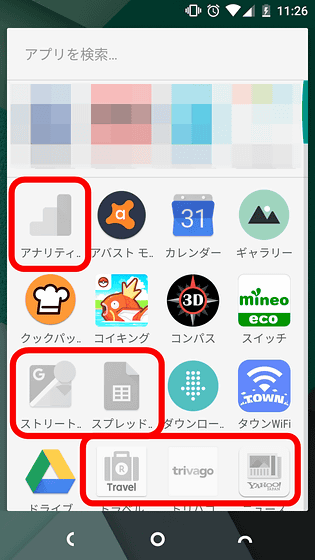
◆ Usability of fingerprint authentication
The power button on the right side also functions as a fingerprint authentication sensor, and the fingerprint is authenticated as soon as the power is turned on. Reading is fairly fast compared with iPhone's Touch ID, it is possible to unlock fingerprint lock just like turning on the power. The person holding the right hand has no problem if registering the thumb, but the person holding the left hand will register the index finger and the authentication of the forefinger was a difficult impression to read a little. However, it is attractive that you can lock your smartphone with fingerprint authentication at a low price, and it is nice to be able to use Android Pay ease with fingerprint authentication.
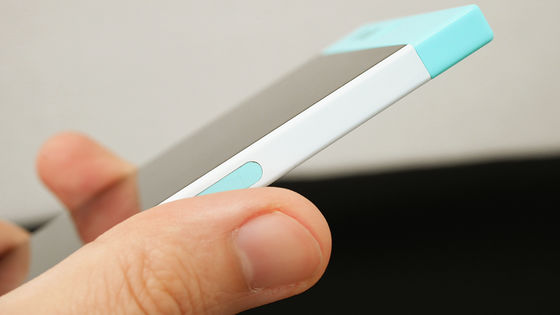
◆ Summary
Originally, applications that are frequently used were not securely pinned, so frequently used applications were sometimes archived in the cloud, but if you adjust using Robin for one month, you will not be using it occasionally Only the application you want to keep "is now archived in the cloud. However, it takes time to restore an application with a large amount of data, so be careful. It is convenient that you no longer need to uninstall "unnecessary applications" in order to free up space, as applications and games and other data restored from the cloud will recover in their original state.
The backup to the cloud storage increases relatively according to the capacity of the internal storage, so it is likely that the capacity will not be imminent even with internal storage as small as 32 GB. It is SIM free so it is perfect for accompanying the trip, with features such as fingerprint verification & Quick Charge 2.0 while conservating the price, specifications are reasonable, and operation is rarely felt. If you can master the concept of "Cloud First", it is a useful smartphone.
Although Nextbit Robin is sold at the official website for 299 dollars (about 35 thousand yen), Amazon can purchase at 11 7768 yen at the time of article creation.
Amazon | Nextbit Robin - Mint Next Bit Robin [Parallel import goods] | Smartphone main unit mail order
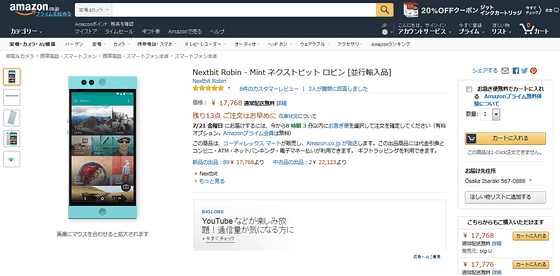
Related Posts:
in Hardware, Smartphone, Review, Posted by darkhorse_log







